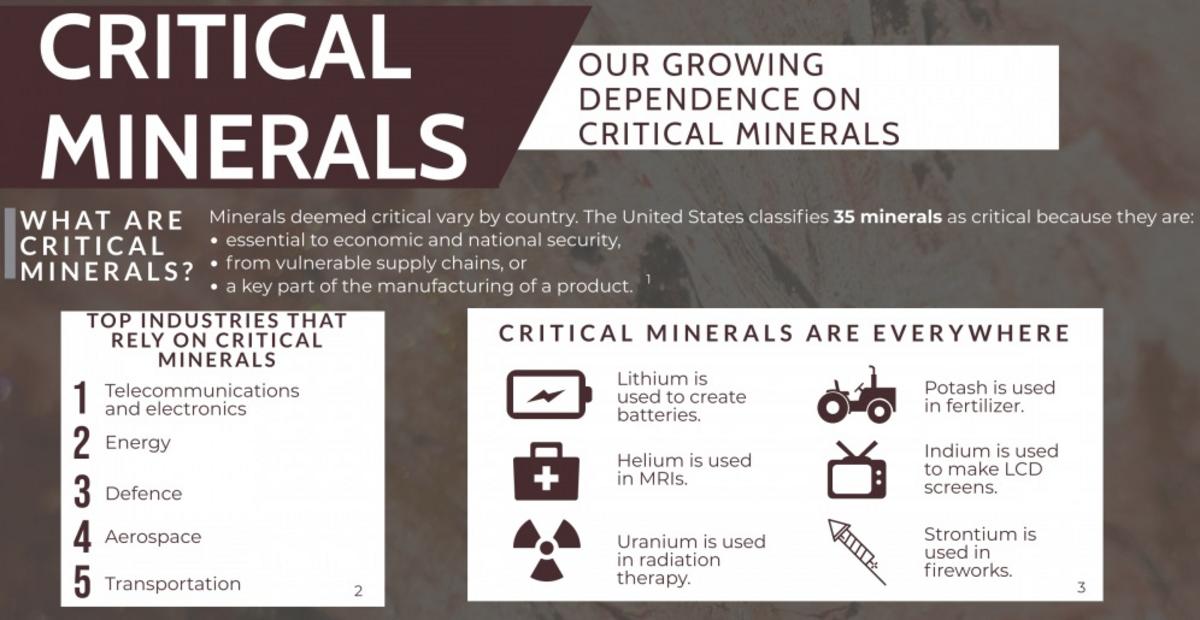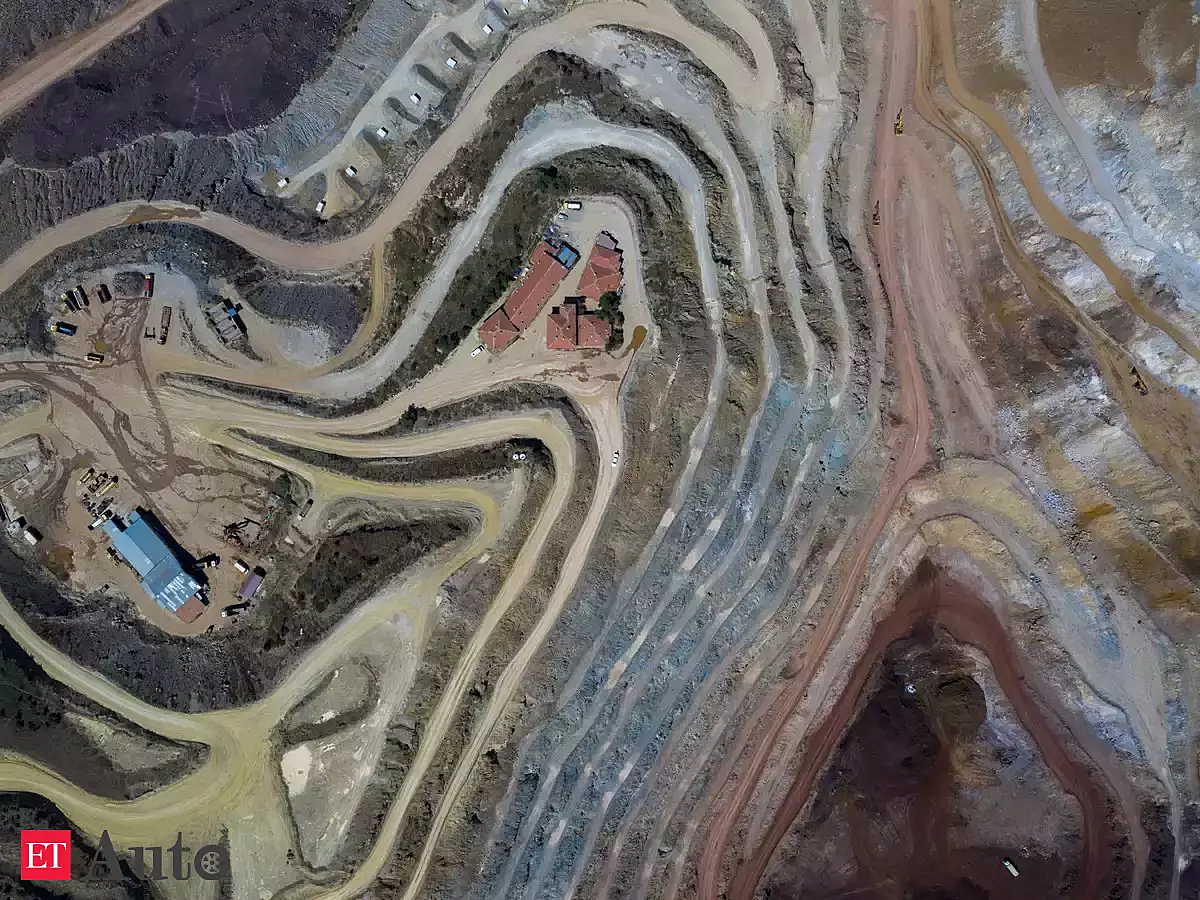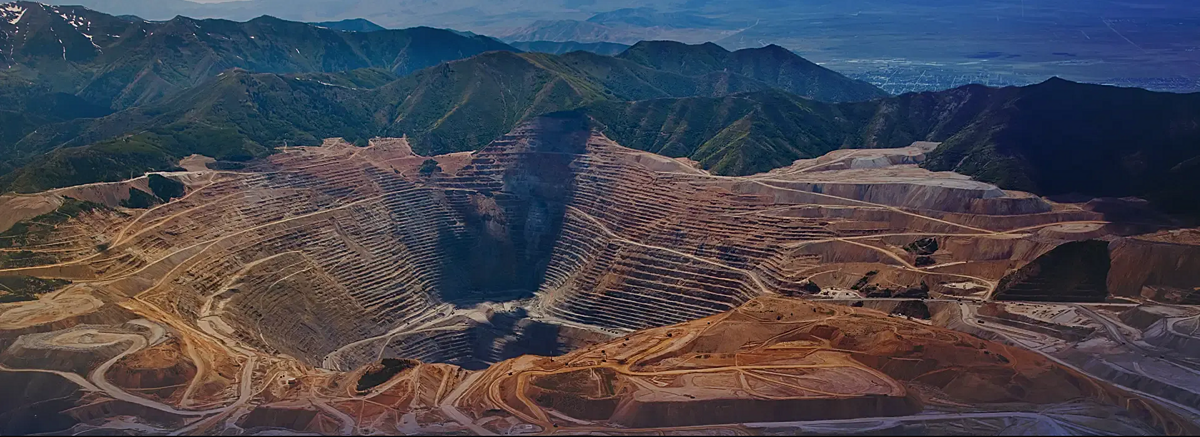Photo credit: Mining Review Africa
New mining projects faces relative difficulty in attracting investments because of opposition by host communities and local governments brought about by potential mine accidents, transparency issues, and operations infringing on ancestral and agricultural lands. Regulators often impose huge taxes and environmental users’ fees on new projects, in addition to stiff penalties on erring mining companies involved in violation of safety and environmental laws and regulations.
The industry is currently benefitting from the global objective of lowering carbon emissions to keep the rise in mean temperatures to below 2°C above pre-industrial levels in accordance with the 2015 Paris Agreement and 17 Sustainable Development Goals, which requires the deployment of renewable energy and efficient battery storage. The unprecedented demand for green metals like copper, nickel, lithium, and cobalt needed for energy transition and digital transformation has also paved the way for sustainable investments in mineral projects.
To address these developments, mining companies are now including environmental, social and governance (ESG) and sustainability issues as part of their strategy to improve the reputation of the industry, acquire the consent of stakeholders to operate, and at the same time realize profits from their operations.
According to the Ernst and Young 2022 Report on the Top 10 Business Risks and Opportunities for Mining and Metals, ESG tops the list of risks/opportunities facing mining companies over the next 12 months. The study indicates that shareholder expectations are impacted by numerous challenges, including the mining industry’s contribution to communities, economies, protection of heritage sites, and engagement with indigenous communities.
Shareholders are also concerned with the industry’s role in prioritizing ethical supply chains, with diversity and inclusion also in the spotlight. Lenders and investors are also focusing on mining projects especially those that are vital to the energy transition but these projects need to have a good ESG strategy to become bankable.
The formalization of the requirement for ESG criteria to be incorporated into the financial evaluations of companies started in August 2005 in a conference hosted by The United Nations Global Compact in Switzerland. The financial industry’s recommendations were compiled into a report entitled "Who Cares Wins.”
The report came out with a conclusion that the "endorsing institutions are convinced that a better consideration of environmental, social and governance factors will ultimately contribute to stronger and more resilient investment markets, as well as contribute to the sustainable development of societies.”
In the report, the financial industry called on all sectors of society and business to integrate ESG into their core activities, and investors should "reward well-managed companies" that embrace ESG.
In 2006, a group of large institutional investors under the auspices of the United Nations, collaborated on a process to develop what has become the Principles for Responsible Investment (PRI). Developed "by investors, for investors," the six PRIs aim to contribute to a more sustainable global financial system and in the long term, the interests of the environment and society as a whole. Signatories to the PRI have grown to over 3,000 since its launching.
The World Economic Forum (WEF) also published the Davos Manifesto, which set out a common code of ethics for business leaders. The manifesto was updated at the WEF's Annual Meeting in 2020, which built on the concept of 'stakeholder capitalism' first introduced in the initial manifesto. Stakeholder capitalism recognizes that long-term business value is only created when the interests of all stakeholders -- employees, shareholders, governments, the environment, and society as a whole, are served simultaneously.
What is ESG?
ESG is a set of standards or criteria for a company’s operations that investors now use to screen potential investments. While ESG is spoken about as a single concept, it is an amalgamation of three distinct but clearly overlapping disciplines -- environmental, social, and governance, each with their own knowledge base, areas of focus, and methodologies for approaching problems and solutions.
Environmental criteria consider how a company performs as a steward of nature. The criteria can also be used in evaluating any environmental risks a company might face and how the company is managing those risks. They include a company’s energy use, waste, pollution, hazardous substances, mine waste/tailings, mine closure, natural resource conservation, treatment of animals, biodiversity, ecosystem services, water management, climate change, carbon footprint, and greenhouse gas emission.
Social criteria, on the other hand, examine how a company manages business relationships with employees, suppliers, and customers. Social criteria also look at how the company deals with the communities where it operates and include human rights, land use, resettlement, vulnerable people, gender, diversity, labor practices, worker/community health and safety, security, artisanal miners, and mine closure/after use.
Lastly, governance criteria deal with a company’s leadership, executive pay, audits, accounting systems, internal controls, and shareholder rights. It also includes legal compliance, ethics, anti-bribery and corruption, anti-money laundering, transparency, corporate governance, ethics, compliance, diversity, lobbying, and approach to taxation. Governance also covers how stockholders are allowed to vote on important issues. Investors want assurances that companies avoid conflicts of interest in their choice of board members and don't use political contributions to obtain unduly favorable treatment.
ESG investing is also referred to as sustainable (or responsible) investing, impact investing, or socially responsible investing. Sustainable investing incorporates ESG criteria in the investment decisions of investors in companies, organizations, or funds. These decisions are based on the investor’s real or perceived understanding of the environmental and/or social impacts that will result from their investments in parallel with the expected financial returns. The purpose of directing funds towards investments that are seen as sustainable is to generate measurable environmental and social impacts in addition to financial returns.
Governments and regulators are obviously supportive of ESG criteria. It is for this reason that ESG investing was identified as an investment megatrend. The Covid-19 pandemic also proved to be a positive catalyst for many investment managers to place their money in the accelerating global trend in sustainable investment. This emerging, new normal investment strategy is gaining momentum and the use of ESG criteria is set to be the standard in sustainable investments.
Aside from proposing new standards and frameworks against which investments should be measured using ESG criteria, institutional investors and fund managers have also created investment products that enable investors to put their money into products that meet their ESG performance requirements.
ESG-based investments can offer quick returns. Investors, notably millennials who are the major beneficiaries of the largest intergenerational transfer of an estimated wealth of $30 trillion, have shown interests in putting their money in EGS.
ESG in Mining
Mining has never been regarded as a “green” or sustainable investment, and this stigma has been the main reason for the difficulty in financing large-scale operations. Investor appetite has gone beyond balance sheets and now dwells in the realm of addressing the urgent need to preserve resources for future use of the coming generations. To responsible investors, mining may not be on the top of the list when considering an investment based on their ESG criteria.
Recently, ESG has provided the opportunity for the industry to address the sustainability challenges by laying down a comprehensive framework that stakeholders can use as metrics when considering their involvement in a mining project.
Before risking capital in a project, investors are now looking to consider the ethics, competitive advantage and culture of a mining organization to determine how the company can balance profits and the benefits to the environment. Mining finance transactions have evolved in recent years to integrate ESG and sustainability considerations.
Now, investors, lenders and other stakeholders in the financial industry look into the ESG credentials of mining companies and very few transactions are done without conducting a due diligence of of ESG issues. Failure to address these issues will ultimately reduce access to funding while good ESG equates to more and cheaper funding.
Mining investors, shareholders, as well as financiers across the spectrum —export credit agencies, development finance institutions and commercial lenders — are making sure that borrowers have the appropriate ESG strategy in place for full implementation.
Investors are no longer passive in their sustainability due diligence of mining projects and exerting efforts to obtain more information from other available sources in addition to mandatory disclosures made under existing regulations and codes. Aside from traditional environmental and social reporting covenants, enhanced ESG and sustainability reporting are becoming standard provisions in loan documentation.
Some investors and lenders are requiring that borrowers comply with the lenders’ own internal ESG policy and sustainability reporting requirements. Some mining finance transactions may also require the appointment of a lender to take on an ESG or sustainability coordinator role for the project.
One particular organization, the World Gold Council, is lobbying for insurance providers to become more involved in the ESG movement by requiring mining companies to uphold ESG principles in order to be eligible for insurance policies. In some large mining initial public offerings, investor roadshows have become venues for investors to grill companies of their ESG initiatives in relation to relevant laws and internal reporting.
On the demand side, cautious buying of mineral commodities is now a reality, as socially-responsible customers want to be kept informed about ESG issues of the supplier. End-users not only look into to the ethical production of minerals but also to the supply chain as well.
Stakeholders like government and financial regulators, ESG rating agencies, civil society and advocacy groups, employees, and host communities are increasingly demanding transparency and performance on ESG issues more than ever. ESG factors have also led to a rise in shareholder activism, where existing investors use their shareholding to influence the mining company’s ESG performance.
Non-compliance with ESG regulations and best practices will result in activist shareholder protests and class action suits against the parent companies of global mining groups particularly those operating in developing countries where environmental laws and governance rules are not properly implemented.
ESG Strategy, Mineral Reporting Standards, and Sustainability Reporting Frameworks
As pressure mounts from capital markets and the public, investments with a well-defined ESG strategy are outperforming their peers in the market and experiencing lower levels of volatility. According to a review of companies listed in the S&P 500 undertaken in 2019 by NASDAQ, companies that received high sustainability ratings "exhibited both higher returns and less risk.” On the other hand, companies with poor ESG ratings "showed the opposite results.”
It is thus imperative if not good business practice for mining companies to engage in the preparation and implementation of a clear ESG strategy that will help address investor concerns and promote additional investments. The strategy containing the company’s corporate values and ESG priorities must fully explain how the company complies with both mandatory and voluntary obligations set out in the ESG company policy.
The ESG strategy must also outline the company’s management plans and how it will assist in meeting its key performance indicators in relation to its sustainability goals. Lenders are also prescribing ESG principles to companies for them to receive green loans and sustainability-linked investment facilities, and incentivize the borrower to meet predetermined sustainability targets. Examples of predetermined sustainability targets for mining companies are increased energy efficiency and improved working or social conditions.
Foremost among the inevitable risks that come with poor ESG management record is the loss of the social license to operate. Dissatisfied government and host communities will post obstacles to mine start or expansion by imposing onerous taxation regimes and regulatory obstacles to erring companies.
Examples of ESG management failure range from repeated environmental violations to outright mining disasters resulting from failed tailings disposal systems and environmental pollution. Violation of land access agreements with local governments, landowners, indigenous peoples, and artisanal miners often lead to cancellation of consents and expose the mining companies to additional civil and criminal liability.
Human rights violations, militarization, and poor workplace health and safety conditions will lead to disruption to operations brought about by labor unrest and even heightened insurgency in the mine area. Wasteful utilization of water and energy resources will not only diminish the company’s bottom line but will cause civil unrest in the communities because wastage will disrupt their livelihood.
On the other hand, a well-managed and transparent ESG compliance system will bolster strong relationship with the stakeholders, easy access to financing, good customer relationship, and better management of scarce resources and raw materials, which will enhance the profitability of the mine operations.
Good labor, health, and safety practices and human resources development also minimize employment turnover and enhance company loyalty. There are so many benefits and opportunities for companies with a strong ESG track record that in the long term will enable the company to operate in other mineralized sites because of good social and political risk management.
Even in national mineral reporting codes that set the minimum public reporting standards of exploration results, mineral resources, and mineral reserves, the inclusion of ESG reporting has been gaining traction. Investors rely on these reporting codes before they proceed with their investment decisions.
Prepared for the purpose of informing potential investors and their advisors on the mineral assets of a reporting company, these reporting codes are now including ESG issues as important contributors to modifying factors which can influence the commercial declaration of mineral reserves.
ESG criteria play an important role in determining whether the mineral resources can be capable of being extracted economically. The investors are looking for evidence of how companies integrate ESG considerations into their businesses and this evidence needs to impact all aspects of the business, including geological processes and mining activities.
Sustainability reporting is largely undertaken voluntarily by companies, regardless of their listing status on a stock exchange. Investors obtain ESG information about companies directly through engagement with companies or via information generated by ESG ratings agencies.
The increasing influence of these rating agencies has resulted in ESG becoming a key factor in raising funds from capital markets. Rating agencies base their ratings from aggregated information directly obtained from the mining companies and rely solely on their review of publicly available information.
However, there remain some questions on the ratings given by these agencies because of transparency issues on what they do with the information obtained and how they generate the ratings.
In response to the growing desire to report on their ESG performance, companies have developed a number of reporting frameworks, the objective of which is to provide guidance and metrics to companies who wish to disclose their sustainability performance. Some of the more commonly used frameworks include the Global Reporting Initiative, Sustainability Accounting Standards Board, Carbon Disclosures Project, and Task Force on Climate-related Financial Disclosures.
Critics of sustainability reporting suggest that these reports have done little to improve the actual management of sustainability issues and instead are utilizing company resources that could be better spent managing sustainability issues on the ground. Gaps also remain between society's expectations of mining companies and their performance in respect of ESG issues.
Companies need to be realistic about what they can deliver and build an ESG strategy that can manage stakeholders’ expectation. There is also a call by industry and investors to standardize sustainability reporting metrics.
Conclusion
To achieve a sustainable future, the global economy will rely to a great extent on resources and raw materials to be provided by the mining industry. To achieve this, companies need to take into account ESG and sustainability practices to attract risk capital and make mining projects bankable.
The industry needs to apply ESG criteria from project inception to mine decommissioning, and throughout the supply chain to make its operations efficient, cleaner, and socially responsible. To preserve their license to operate and achieve sustainability, mining companies must also ensure that they have an ESG strategy in place to adhere to relevant laws, comply with regulatory codes, and satisfy all stakeholders.
Fernando “Ronnie” S. Penarroyo specializes in Energy and Resources Law, Project Finance and Business Development. He may be contacted at fspenarroyo@penpalaw.com for any matters or inquiries in relation to the Philippine resources industry and suggested topics for commentaries. Atty. Penarroyo’s commentaries are also archived at his professional blogsite at www.penarroyo.com
References
Environmental, Social, and Governance (ESG) Criteria, 05 March 2021, https://www.investopedia.com/terms/e/environmental-social-and-governance-esg-criteria.asp
ESG Investing Will Speed-up the Energy Transition, 27 July 2021, https://foresightdk.com/esg-investing-will-speed-up-the-energy-transition/
Holman, Chris, ESG Investments in Mining, Azure Capital, 11 March 2021, https://apac.cib.natixis.com/m-a-pulse-in-apac-articles/focus-on/articles/esg-investments-in-mining
Introduction to Environmental, Social and Governance (ESG) Considerations for the Mining Sector: Reporting Obligations and Investor Expectations, Baker Mckenzie,
Sankaran, Aparna, ESG with a Heightened Focus on Environment and Social Issues, Emerges as the Top Risk/Opportunity for the Mining Sector, https://www.ey.com/en_gl/news/2021/10/esg-with-a-heightened-focus-on-environment-and-social-issues-emerges-as-the-top-risk-opportunity-for-the-mining-sector
Steele-Schober, Teresa, The Importance of ESG for Mineral Reporting, http://www.scielo.org.za/scielo.php?script=sci_arttext&pid=S2225-62532021000600003
Taking ESG Seriously: The Crucial Role of Mining investors in the Energy Transition, White and Case, https://www.jdsupra.com/legalnews/taking-esg-seriously-the-crucial-role-2066231/
Walker, David, ESG Insights: What does ESG mean for the Mining industry? https://www.slrconsulting.com/news-and-insights/insights/esg-insights-what-does-esg-mean-mining-industry










